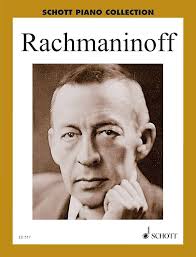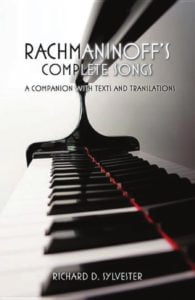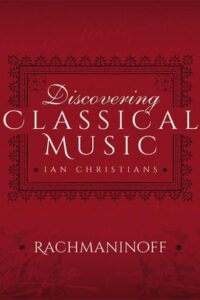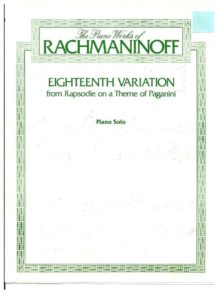Come join us now, and enjoy playing your beloved music and browse through great scores of every level and styles!
Can’t find the songbook you’re looking for? Please, email us at: sheetmusiclibrarypdf@gmail.com We’d like to help you!
Table of Contents
Rachmaninoff 13 Preludes, Op.32 sheet music, Noten, partitura, spartiti, 楽譜, 乐谱

Search your favorite sheet music in the Sheet Music Catalog

Please, subscribe to our Library.
If you are already a subscriber, please, check our NEW SCORES’ page every month for new sheet music. THANK YOU!
Sergei Rachmaninoff: A Biography
Sergei Vasilyevich Rachmaninoff (April 1, 1873 [Old Style] / April 2, 1873 [New Style] – March 28, 1943) was a Russian composer, virtuoso pianist, and conductor. He is widely considered one of the last great champions of the Romantic style in classical music, renowned for his lush harmonies, soaring melodies, and virtuosic piano writing. His life and work bridge the 19th-century Romantic tradition of his Russian homeland and the modern, tumultuous world of the 20th century.

Browse in the Library:
Or browse in the categories menus & download the Library Catalog PDF:
Early Life and Prodigious Talent (1873-1892)
Rachmaninoff was born into an aristocratic family at their estate, Semyonovo, in the Russian Empire. Although the family’s wealth declined, his musical talent was evident early. His mother provided him with his first piano lessons. Recognizing his prodigious ability, she enrolled him in the Saint Petersburg Conservatory at age ten.
A lack of academic dedication led his family to send him to the stricter Moscow Conservatory in 1885, where he studied under the formidable pianist and teacher Nikolai Zverev. This period was crucial; Zverev’s discipline instilled in him a legendary technical prowess. He later studied composition with Anton Arensky and counterpoint with Sergei Taneyev. He graduated from the Moscow Conservatory in 1892, winning the Great Gold Medal for his one-act opera, Aleko.

Early Career and the “First Symphony” Crisis (1892-1900)
The immediate success of Aleko and the publication of his famous Prelude in C-sharp minor (Op. 3, No. 2) launched his career. However, this early promise was almost shattered by the disastrous 1897 premiere of his Symphony No. 1 in D minor.
The performance, under conductor Alexander Glazunov (who was rumored to be drunk), was poorly prepared and received scathing reviews, most famously from critic César Cui, who compared it to a depiction of the ten plagues of Egypt. The failure plunged Rachmaninoff into a deep psychological and creative crisis that lasted nearly three years. He composed almost nothing and suffered from severe self-doubt.

Recovery, Triumph, and Golden Years (1900-1917)
Through therapy with Dr. Nikolai Dahl, a pioneer of hypnotherapy, Rachmaninoff recovered his confidence. The direct result of this treatment was his Piano Concerto No. 2 in C minor (Op. 18), premiered in 1901 with the composer as soloist. The work was a triumphant success and remains one of the most beloved and frequently performed concertos in the entire repertoire.
This marked the beginning of his most fertile and successful period in Russia. During these years, he composed a stream of masterpieces, including:
- Piano Concerto No. 3 in D minor (1909): A work of immense technical and emotional scope, written for his debut American tour.
- Symphony No. 2 in E minor (1907): A sprawling, melodically rich work that fully redeemed his earlier symphonic failure.
- The Bells (1913): A choral symphony based on Edgar Allan Poe’s poem, which he considered one of his finest works.
- All-Night Vigil (Vespers) (1915): A monumental a cappella choral work drawing on ancient Russian Orthodox chants.
- Études-Tableaux and Preludes for solo piano, which expanded the technical and expressive possibilities of the instrument.
He also maintained a busy schedule as a conductor, holding posts at the Bolshoi Theatre and becoming a respected interpreter of opera and orchestral music.

Exile and the American Years (1917-1943)
The 1917 Russian Revolution forced Rachmaninoff, a member of the landowning class, to flee with his family. They left Russia, never to return. He saw the loss of his homeland as a profound personal and artistic tragedy.
To support his family in exile, he leveraged his greatest asset: his phenomenal skill as a pianist. He embarked on a grueling career as a touring virtuoso, one of the most celebrated of his era. His powerful technique, unparalleled clarity, profound rhythmic drive (nicknamed “Rachmaninoff’s steamroller”), and deep, singing tone set a new standard for piano performance.
This demanding lifestyle, however, drastically reduced his time for composition. The major works from his American period are fewer but significant:
- Piano Concerto No. 4 in G minor (1926, revised 1941)
- Rhapsody on a Theme of Paganini (1934): A brilliant set of 24 variations for piano and orchestra, fusing his Romantic lyricism with 20th-century wit and structure.
- Symphony No. 3 in A minor (1936): A more concise and bittersweet work, infused with nostalgia for Russia.
- Symphonic Dances (1940): His final completed work, a powerful and haunting summation of his artistic life.
Rachmaninoff spent his final years in the United States, becoming a citizen shortly before his death from advanced melanoma in Beverly Hills, California, in 1943.
Why Rachmaninoff is So Important and Influential
Rachmaninoff’s importance and enduring influence stem from three interconnected pillars of his career: his work as a Composer, a Pianist, and a Cultural Bridge.

1. The Composer: The Last Great Romantic
In an era when Stravinsky, Schoenberg, and Prokofiev were revolutionizing music with atonality, neoclassicism, and dissonance, Rachmaninoff remained steadfastly committed to the Romantic tradition. His importance lies in his ability to perfect and personalize this language.
- Melodic Genius: Rachmaninoff had an unparalleled gift for long, soulful, and instantly memorable melodies. Tunes like the 18th variation from the Rhapsody on a Theme of Paganini or the opening of the Second Piano Concerto are embedded in global culture. His music speaks directly to the heart.
- Lush Harmonic Language: His use of rich, complex chords, often within a tonal framework, creates a unique soundscape of passion, nostalgia, and melancholy. This “Rachmaninoff sound” is immediately identifiable and has been hugely influential on film music; the scores of John Williams and many other Hollywood composers are deeply indebted to his harmonic world.
- Virtuosic but Purposeful Piano Writing: As a pianist himself, he understood the instrument like few other composers. His piano works are not merely flashy; the technical demands always serve a deep musical and emotional purpose. He expanded the textural and sonoric possibilities of the piano, making it sound like an entire orchestra.
2. The Pianist: A Legendary Interpreter and Virtuoso
Rachmaninoff’s legacy as a performer is equally monumental.
- The Gold Standard: His recordings, many of which are still in print, are considered definitive interpretations of his own works and those of Chopin, Liszt, and Schumann. They provide a direct link to the 19th-century Romantic performance tradition.
- Technical Prowess: His large hands (capable of spanning a 13th on the keyboard) allowed him to compose and play chords previously thought unplayable, influencing the technical expectations for pianists ever since.
- Influence on Performance Practice: His precision, rhythmic integrity, and refusal to engage in sentimental rubato set a modern standard for clarity and structural understanding in Romantic music.
3. The Cultural Bridge: Between Two Worlds
Rachmaninoff’s life story makes him a symbolic figure.
- Old Russia and the New World: He embodied the grandeur and depth of pre-Revolutionary Russian culture. In exile, he became a living repository of that world, and his music became a vessel for its expression and a source of immense pride for the Russian diaspora.
- Enduring Popular Appeal: Few “classical” composers have achieved his level of sustained popular appeal. His music consistently tops classical charts and features in blockbuster films (Shine, Brief Encounter, Groundhog Day). This ability to connect with both connoisseurs and casual listeners is a testament to the direct emotional power of his work.
Rachmaninoff:
Sergei Rachmaninoff’s importance lies in his unique triple threat: he was a composer who perfected a beloved musical style, a pianist who set technical and interpretive benchmarks for generations, and a cultural icon whose music expresses a universal longing and profound emotional depth. While some critics of his time dismissed him as old-fashioned, history has vindicated him. He did not follow musical trends; he forged his own path, creating a body of work that continues to move, challenge, and inspire audiences and musicians around the world, securing his place as a true giant of classical music.
